This story is part of Focal Point iPhone 2022, CNET's collection of news, tips and advice around Apple's most popular product.
Apple just launched the Apple Watch Series 8, which means you might be wondering whether it's time to upgrade. The Series 8 introduces temperature sensing and car crash detection, along with a refreshed processor.
As is typically the case when deciding to upgrade, the answer will depend on which Apple Watch you currently own. Owners of recent Apple Watches like the Series 7 and Series 6 have little reason to splurge on the $400 Series 8. That's especially true since Apple typically introduces many new features in software updates like WatchOS 9, which is compatible with watches that are up to 4 years old. But if you have an aging Apple Watch Series 3 or earlier, you're definitely due for an upgrade.
Apple Watches released over the past five years have many of Apple's core health and safety features in common, such as irregular heart rhythm notifications, high and low heart rate notifications, water resistance, workout tracking, emergency SOS and fall detection (Series 4 and later). The biggest differences come down to health tracking, considering Apple has added new sensors for temperature sensing and blood oxygen measurements in recent years.
However, it's important to remember that Apple Watches aren't medical devices, which can make it hard to assess how valuable these deeper health metrics truly are. My general take is that these extra features could be useful for those who want access to more cardiac and respiratory health data to share with their physician.
This guide compares the Apple Watch Series 8 to Apple Watch models released over the past five years. The Apple Watch Ultra isn't included because it's a wholly new product with more pronounced differences than Apple's other watches. You can learn more about the Apple Watch Ultra in our in-depth review.
Read more: Apple Watch Series 8 vs. SE: Biggest Differences After Using Both Watches
Apple Watch Series 8 vs. Series 7
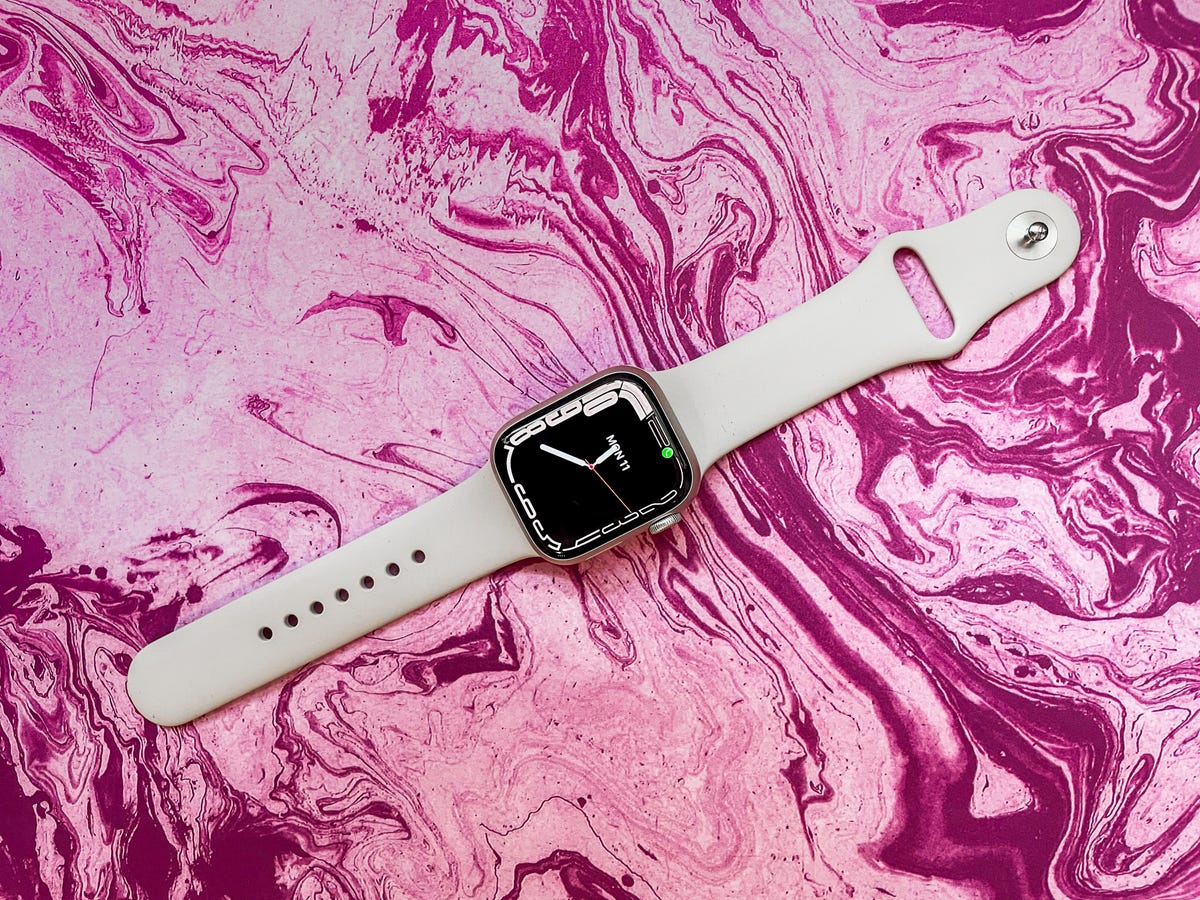
The Apple Watch Series 7
Lisa Eadicicco/CNETIf you have an Apple Watch Series 7, there's no reason to upgrade right now. The Series 7 and 8 have a lot in common, like their larger screen, QWERTY keyboard, fast charging and nearly identical suite of health and wellness features. The major upgrades in this year's Apple Watch include a temperature sensor, an updated processor (although performance is the same as the Series 7) and new gyroscopes and accelerometers capable of detecting car crashes. Such changes are bound to make the Apple Watch more useful in the long term, but they don't merit an upgrade if you're already using a Series 7.
It's also too soon to tell what the temperature sensor brings to the overall experience, so I can't recommend upgrading for that reason alone. Apple is positioning it as being most helpful for providing retrospective ovulation estimates and more accurate period predictions. Since it takes two menstrual cycles for ovulation estimates to become available and the watch has only been available for about two weeks, it's still a bit early.
The company also says shifts in baseline temperature can indicate whether you're jet-lagged or under the weather. Apple charts deviations in your baseline wrist temperature in a graph within the Health app, but right now it's largely up to the user to interpret what this means. I'm hoping Apple finds a way to tie this data into other metrics in the future, like some type of wellness or readiness score.
The bottom line: All told, the Apple Watch Series 7 can do almost everything the Apple Watch Series 8 can. Don't upgrade just yet.
Apple Watch Series 8 vs. Series 6
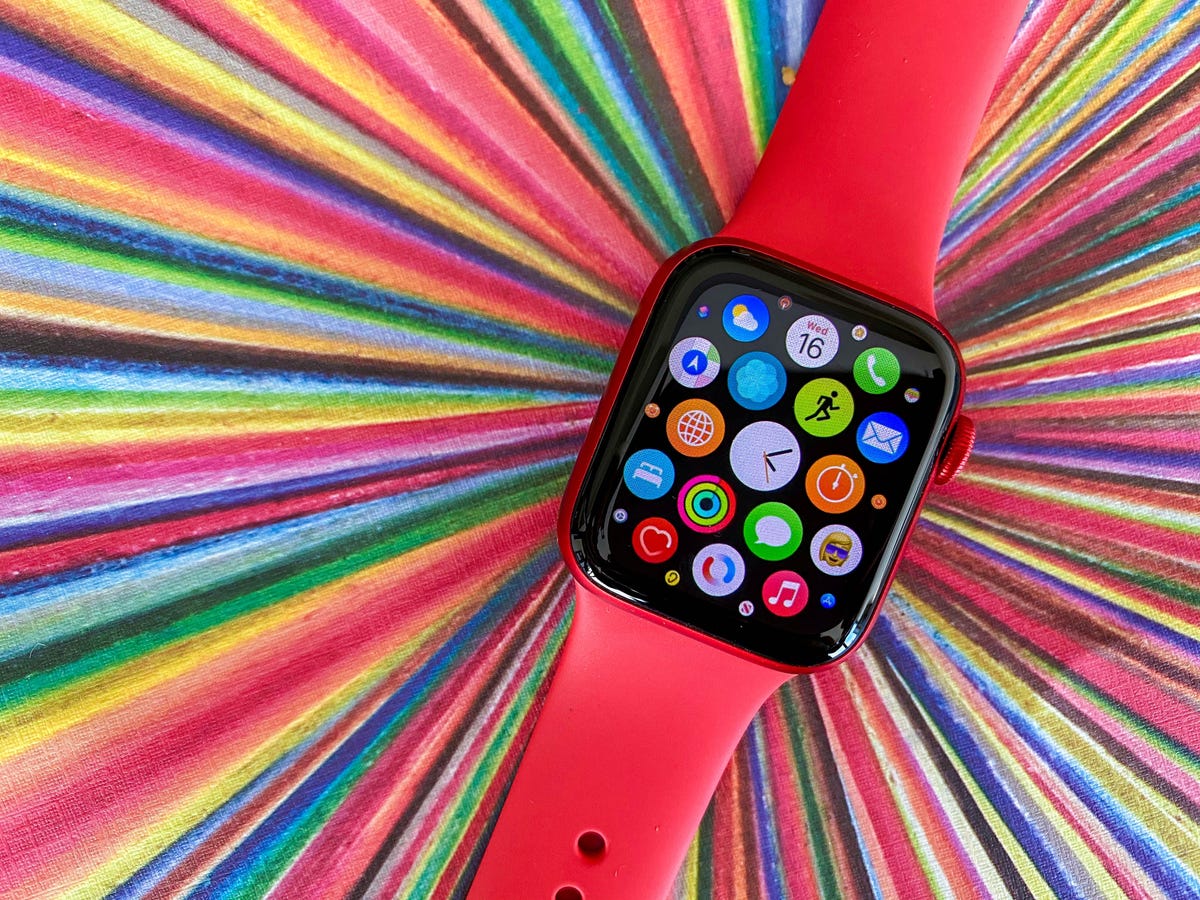
The Apple Watch Series 6
Vanessa Hand Orellana/CNETThe Apple Watch Series 6 is 2 years old, but it's still more than enough to meet the needs of most people. Compared to the Series 6, the Series 8 has temperature sensing, car crash detection and a new processor. (However, that processor probably offers roughly the same performance as the Series 6's chip anyway.) The Series 8 also has the upgrades Apple introduced with the Series 7, such as a more durable design that's dust resistant, a slightly larger screen with a QWERTY keyboard for typing text replies and faster charging.
Aside from temperature sensing and car crash detection, the Series 8's extra features are more about refining the Apple Watch than bringing something entirely fresh to Apple's smartwatch. The Series 6 is still new enough to have Apple's more noteworthy upgrades from recent years, like an always-on display and blood oxygen saturation measurements. It's also compatible with Apple's new Compass app, which includes new features for retracing your steps and setting custom waypoints. That's something you can't say for the Series 5 and earlier.
The bottom line: The Apple Watch Series 6 is still new enough for most people. The upgrades in the Series 8 are refinements for the most part, rather than holistically new features, with the one exception being temperature tracking.
Read more: Stressed Out? Wearable Gadgets From Fitbit, Apple and Others Want to Help
Apple Watch Series 8 vs. SE (first generation)
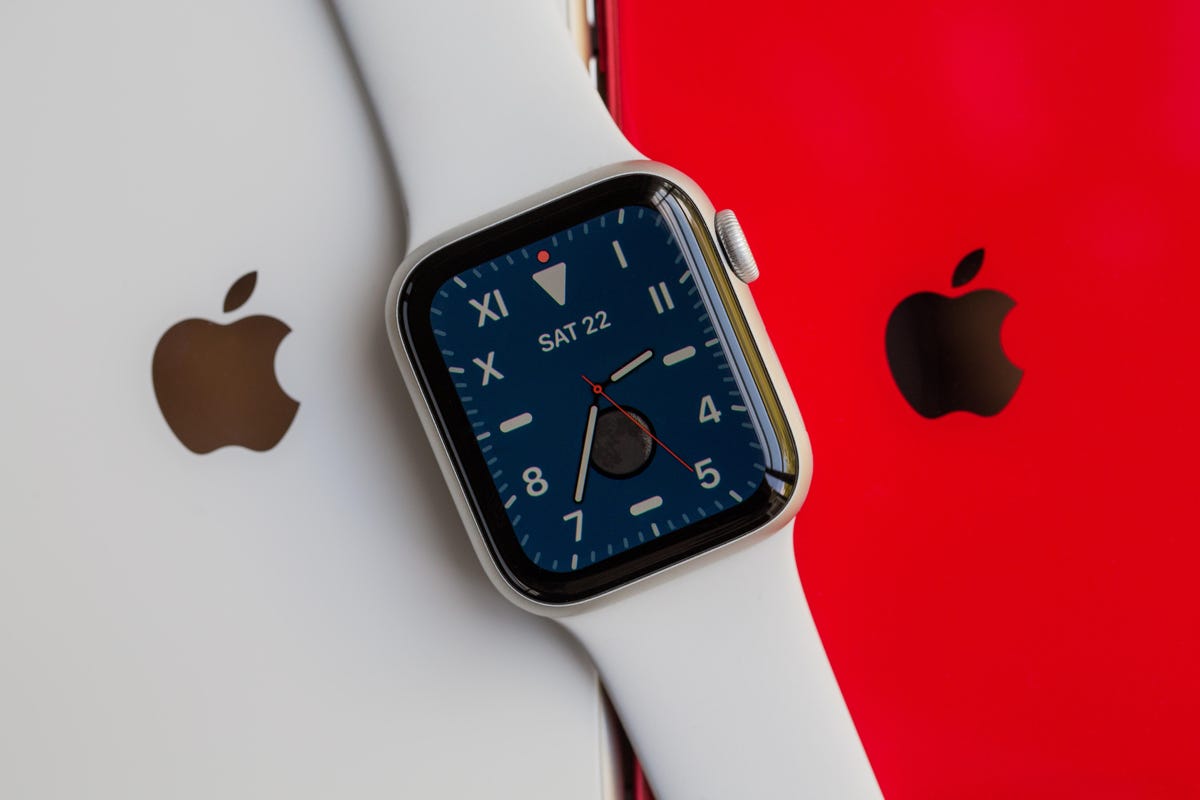
The first-generation Apple Watch SE
Angela Lang/CNETThe question of whether it's worth upgrading from the Apple Watch SE is a little less straightforward and depends on what you want in a smartwatch. If you have the SE and find yourself wanting more in terms of health tracking, there's a case to be made for splurging on the Series 8. Both the first- and second-generation SE lack the ability to take an ECG from your wrist, blood oxygen saturation measurements, temperature sensing and an always-on display.
If you're curious about these features and want more data on your cardiac and respiratory health to share with your doctor, the Apple Watch Series 8 has enough extra functionality to justify an upgrade. The health sensors are the biggest reason to upgrade to the Series 8, but you'll also get other perks like a larger screen with a QWERTY keyboard, faster charging and most importantly, a display that can still show the time and other information even when it's idle.
If you're not interested in these extra health metrics, you might be considering upgrading from the original SE to the new one. However, I wouldn't recommend doing so unless your current watch is feeling noticeably slow. Aside from car crash detection and a faster processor, there isn't much that's new between the first and second-generation SE.
The bottom line: It's worth hanging onto your Apple Watch SE if it's still in good condition. But if you want deeper health tracking and your SE is starting to feel slow, there's enough that's new in the Series 8 to make it worth considering.
Apple Watch Series 8 vs. Series 5
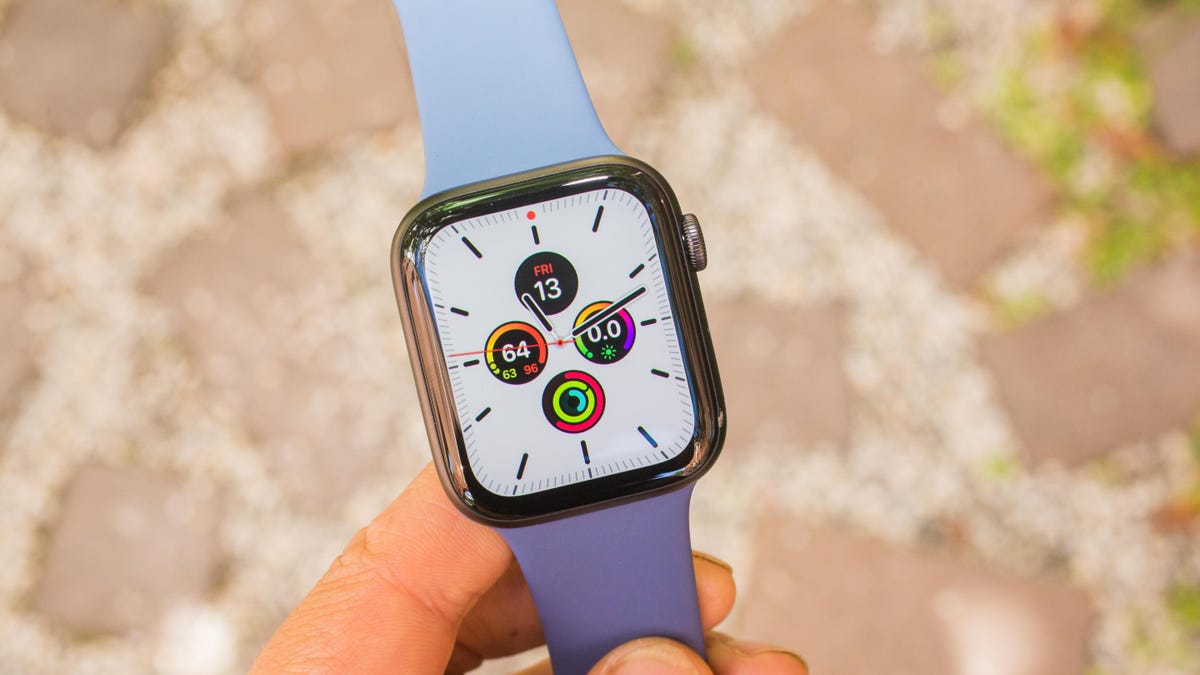
The Apple Watch Series 5
Sarah Tew/CNETThe Apple Watch Series 5 may sound ancient compared to the Series 8, but I'd still recommend thinking twice before spending $400 on Apple's newest flagship watch. Since it's 3 years old, it doesn't have all of Apple's more recent health features, like blood oxygen measurements and temperature sensing. But it can still take an ECG and has an always-on display, two features that even the brand new second-generation Apple Watch SE lack. The processor is a bit old, but that shouldn't matter as long as your watch still feels like it's running smoothly.
Once again, the biggest reason to upgrade to the Series 8 is for its blood oxygen saturation and temperature readings. Those features might not matter for everyone, but they could be important to those specifically interested in cycle tracking and respiratory health. As mentioned previously, you'll also get other design refinements like a more durable build, speedier charging and a larger display -- elements that make the Apple Watch feel more efficient when factored together, but likely don't warrant an upgrade on their own.
The bottom line: If you have a Series 5, you can probably afford to hold onto it for a bit longer unless you really want the ability to see blood oxygen levels and the Series 8's new temperature sensor. With an always-on display and ECG measurements, the Series 5 still packs a surprising amount of value for a smartwatch that's three years old.
Read more: Should You Upgrade to the iPhone 14? See How It Compares to Older Models
Apple Watch Series 8 vs. Series 4
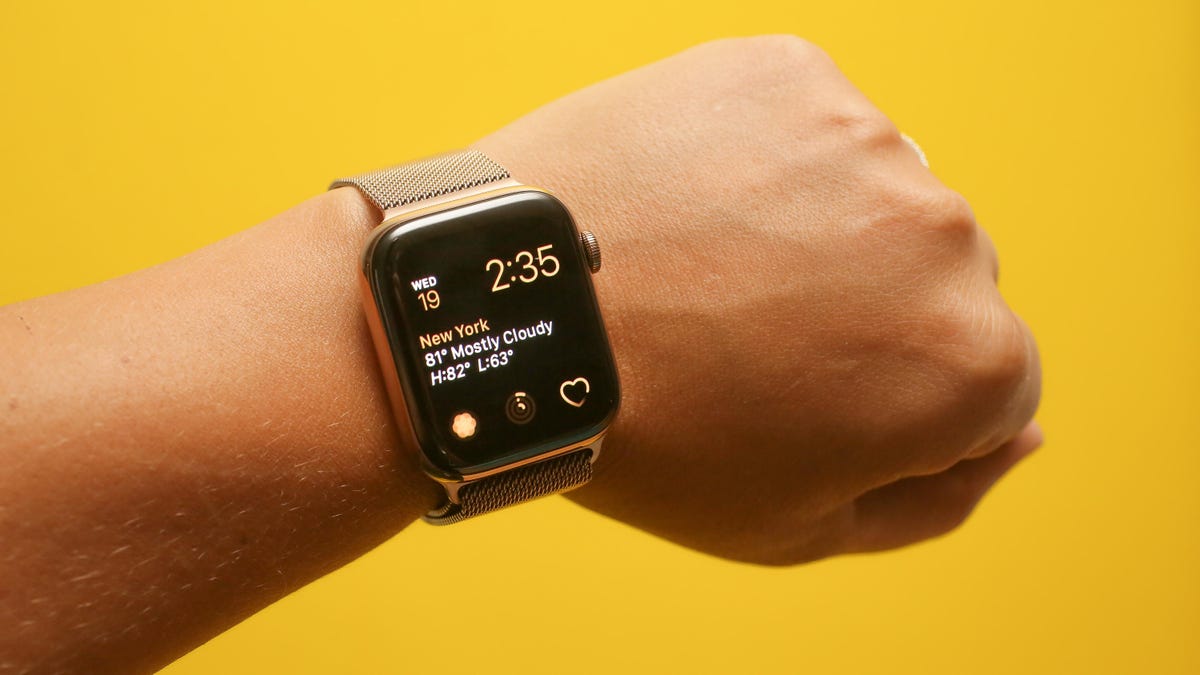
The Apple Watch Series 4
Sarah Tew/CNETYou don't need to upgrade if you're still happy with your Series 4, but there are plenty of reasons to do so. While the Series 4 has many of the Apple Watch's core features, like workout tracking, irregular heart rate notifications and Apple Pay support, there's a lot to gain from upgrading.
In addition to the Series 8's new temperature sensor and car crash detection, you're also getting an always-on display, faster charging, a larger screen with a QWERTY keyboard, the ability to take an ECG from your wrist, blood oxygen saturation measurements, and a compass. Not to mention, the Series 4's 4-year-old processor is likely starting to feel a bit old. All of these changes come together to make the Series 8 feel significantly new and different compared to the Series 4. The Series 4 also only has 16GB of storage while Apple's newer watches have 32GB, which means it could be difficult to install software updates in the future.
If you just care about having a basic Apple Watch that will feel fast and last for years to come, the $250 Apple Watch SE is also worth considering. You'll get Apple's newest smartwatch processor, car crash detection and a compass app, but you'll be missing out on all the other features mentioned above by choosing the new SE over the Series 8.
The bottom line: In the four years since Apple launched the Series 4, it's made plenty of improvements that make the Series 8 feel like a notable leap forward. If your Series 4 is starting to feel sluggish and you're in a position to buy a new watch, it's worth the upgrade.
Apple Watch Series 8 vs. Series 3
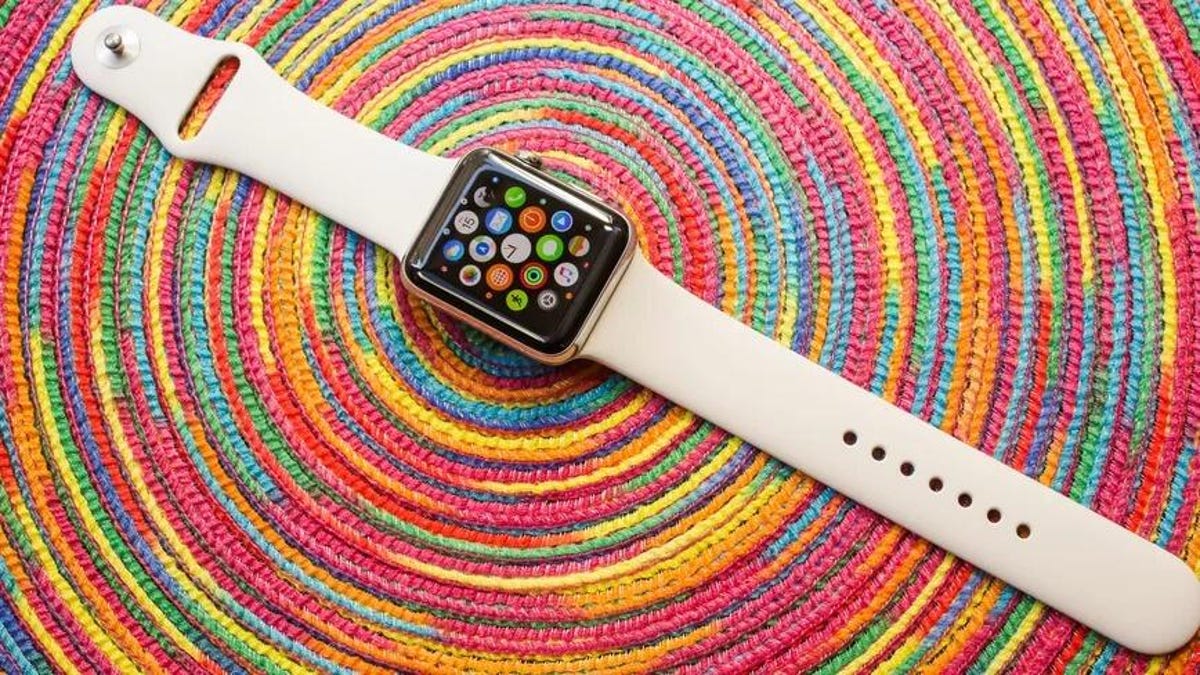
The Apple Watch Series 3
Sarah Tew/CNETIf you have an Apple Watch Series 3, it's time to upgrade. The Series 3 is now 5 years old and no longer supports software updates, which should be the biggest motivation for upgrading. Not only will you be missing out on new features, but software updates generally include important security fixes, too.
The Series 3 feels dated in almost every way compared to the Series 8 and second-generation SE. Its processor is also 5 years old, which means you're probably dealing with some lag. The screen is smaller than Apple's newer watches since Apple implemented a redesign starting with the Series 4. And it lacks modern features like a compass, fall detection, and the many health features Apple has added over the last five years. Not to mention the battery life is probably starting to feel short.
If you don't want to spend $400 on the Series 8, the $250 Apple Watch SE is a great option for those upgrading from a Series 3 or older. It has all of the basics, including car crash detection, a larger screen than the Series 3, fall detection, high and low heart rate notifications, irregular heart rhythm notifications, the new compass app and Apple Pay support.
The bottom line: If you have the Series 3, it's time to upgrade. Period.
Looking for more Apple Watch advice? Check out the settings you may want to change and our favorite features in WatchOS 9.
Article From & Read More ( Should You Upgrade to the Apple Watch Series 8? How It Compares to Older Watches - CNET )https://ift.tt/9xy8YaL
Technology

No comments:
Post a Comment